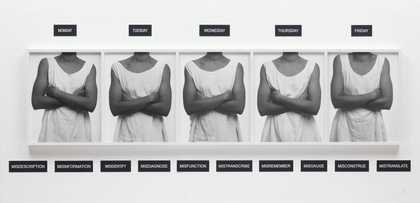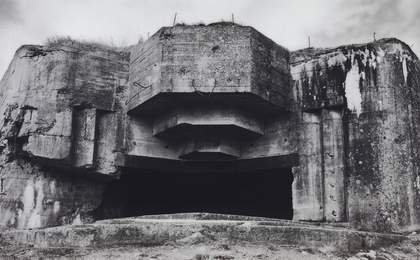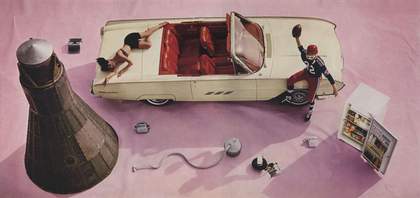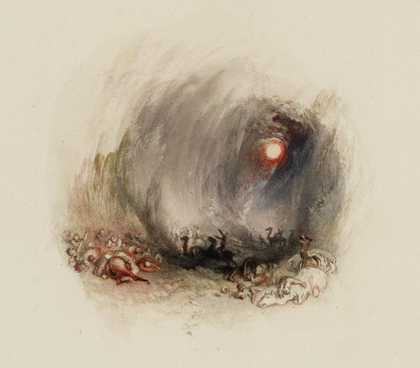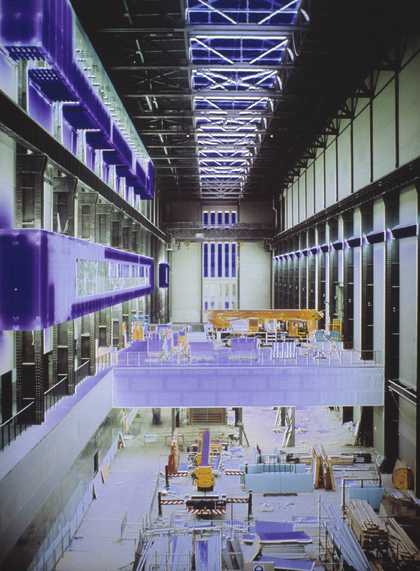
Catherine Yass
Bankside: Cherrypicker (2000)
Tate
How do we invest a space with meaning? Based in Tate Modern after hours, this collaborative course explores the strategies adopted by artists and Tate’s audience to appropriate or transform the iconic space of the Turbine Hall. Over the six weeks of the course, we explore our relationship to space via questions about memory, fiction, function, resistance and senses. Sessions combine short lectures, group discussions, gallery visits and collective experiments.
Martine Rouleau
Course leader Martine Rouleau is a freelance curator ;who has contributed to projects in and around London since 2007, working with the ICA, the Brighton Photo Fringe, Electra Productions and notably at Tate Modern, organising Experiences of the Dark, a series of performances and events that took place in Miroslaw Balka's How it is in the Turbine Hall. Her curatorial research and practice focus on collaborative, interdisciplinary processes that reflect, mediate and question experiences and knowledge of art. She completed a PhD at the London Consortium pertaining to the strategies used by artists and audiences that contribute to defining the boundaries and liminal aspects of public art institutions. Martine is also Learning and Access Officer at UCL Art Museum where she is responsible for the strategic development and delivery of all aspects of audience engagement. She currently lectures at the MA in Arts Policy and Management at Birkbeck College.
Course outline
Week 1
Monday 24 February 2014, 18.45–20.15
What's in a space?
The Turbine Hall is often seen or understood as a blank slate yet it is full of experience, history and meaning. This introductory session includes group discussion around the question What's in a space? as well as a phenomenological experiment in the space of the Turbine Hall.
Week 2
Monday 3 March 2014, 18.45–20.15
Verbal space
We often use language to make sense of the world and to communicate our understanding of it. How is space affected/changed by language and how does language affect space?
This week we look at Bruce Nauman's Raw Materials and how the artist used language and sound to transform the space of the Turbine Hall. How can we use written and spoken language to appropriate space?
Week 3
Monday 10 March 2014, 18.45–20.15
Interpersonal/intrapersonal space
Space is most often shared with others and this contributes to the formation of social and interpersonal dynamics. Looking at the work of Tino Sehgal's These Associations, we experiment and discuss whether we can gain a different understanding of space with others.
Week 4
Monday 17 March 2014, 18.45–20.15
Space in touch and movement
In order to know a space, one has to move within it, to test the boundaries of its materiality. With a movement experiment and a discussion of Olafur Eliasson's The Weather Project and Carsten Höller's Test Site, we explore the importance of movement and touch in our relationship to space.
Week 5
Monday 24 March 2014, 18.45–20.15
Logical space
We put ourselves in the place of artists. How does one create work for a space like the Turbine Hall? Looking at Sunflower Seeds by Ai Weiwei and Shibboleth by Doris Salcedo, we explore questions of scale, environmental conditions, health and safety policies and duration, thinking about making via a problem-solving experiment.
Week 6
Monday 31 March 2014, 18.45–20.15
(Blue sky) thinking: The future of the Turbine Hall.
Tate has just secured a new partnership for eleven years of Turbine Hall commissions from 2015 onwards. Knowing what we now know about space and looking back on the past eleven years of the Turbine Hall, what do you want to see/do with the space?

